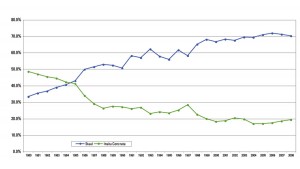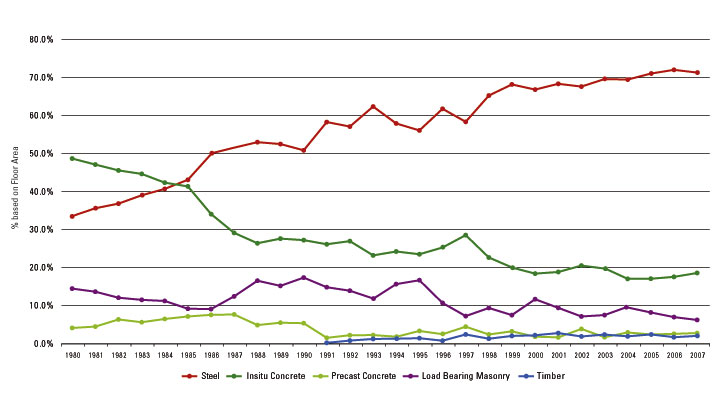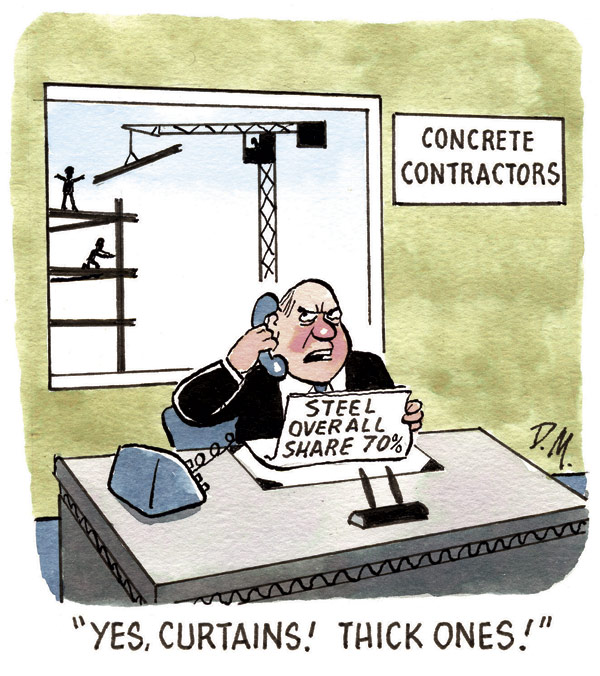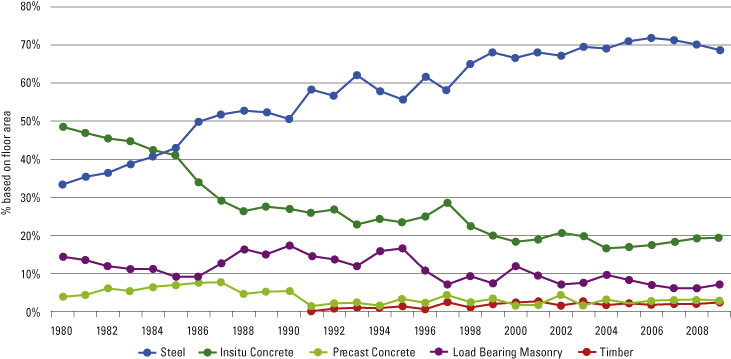Technical
The case for steel – The market votes for steel
The competitive gap between steel and concrete frames is widening, according to the latest independently produced Cost Comparison study. Steel retains its dominant share of the key single storey industrial buildings and multi storey buildings frames market in the latest report from independent market researchers Construction Markets. Taken together the two independent reports provide compelling confirmation that designers are making the right choice when they opt for steel.
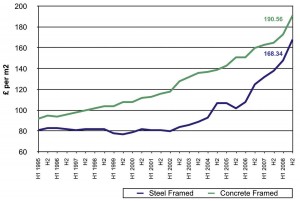
Comparison of Steel and Concrete frame and floor costs for Buildings A and B – Average of all schemes
Steel frames are consistently shown to be the fastest and most cost effective choice for frames for commercial multi storey buildings in the annual Cost Comparison studies. The latest study, for the fourth quarter of 2008, shows how steel has gained in competitive advantage since 1995. The average building options in 1995 showed a £12.10/m2 cost advantage for steel – this had grown to £22.22 in 2008. The study showed concrete frame and floor options costing an average of £190.56/m² against only £168.34/m² for steel.
The Department for Business, Enterprise and Regulatory Reform (BERR), formerly the DTi, produces monthly statistics tracking material costs against GDP inflation to provide a comparison in real terms. These figures show that since 1995 the cost of steel has increased by 43%, the cost of concrete has increased by 25% and reinforcement bar has increased by 87%.
Constructed component costs over the same period show that the relative costs of fire protection and metal decking have fallen below or remain very close to 1995 levels, which has helped maintain steel’s competitive advantage over concrete.
Although the cost of a frame and floor is a relatively small part of the total cost of a building, a steel frame reduces timescales and has a beneficial effect on other costs such as foundations, cladding and services, leading to significant overall cost savings.
Two buildings are analysed for the Cost Comparison study:
Building A
This tracks the cost per m² for various frame and floor options for Building A: a regional office block located in Manchester.
Composite beam and slab is the most competitive option costing £131/m2 whilst the Reinforced concrete flat slab is the most expensive at £176/m2.
There is little difference in price between the other three options of Slimdek, cellular beam, and insitu frame with precast floors.
Building B
This tracks the cost per square metre for various frame and floor options for Building B: a prestige company headquarters located in London.
Again Composite beam and slab is the most cost effective framing option at £161/m². This compares with £210 for Reinforced concrete flat slab and £227 for Post tensioned ribbed concrete flat slab.
The steel options of Slimdek and cellular beam also have significant cost savings for this building. In comparison with the cheapest concrete option, both systems offer savings of £14/m².
Market share stays high
In the 2008 Market Shares Survey – the 28th in this series of annual surveys – steel’s share of the key multi storey market remains at around 70% since 2003.
Steel dominates the single storey industrial building market with a 97% market share, as developers and tenants of sheds, often large retailers and others with complex distribution and logistical needs, become increasingly concerned with sustainability.
Steel enjoyed a 70.1% share of the overall market of 15.3M square metres for multi storey building frames in 2008. Dominant market share was also retained in the key growth sectors of education and healthcare.








